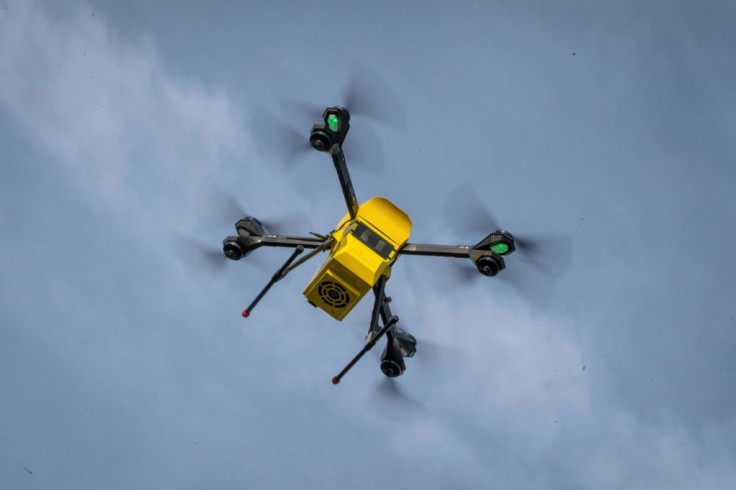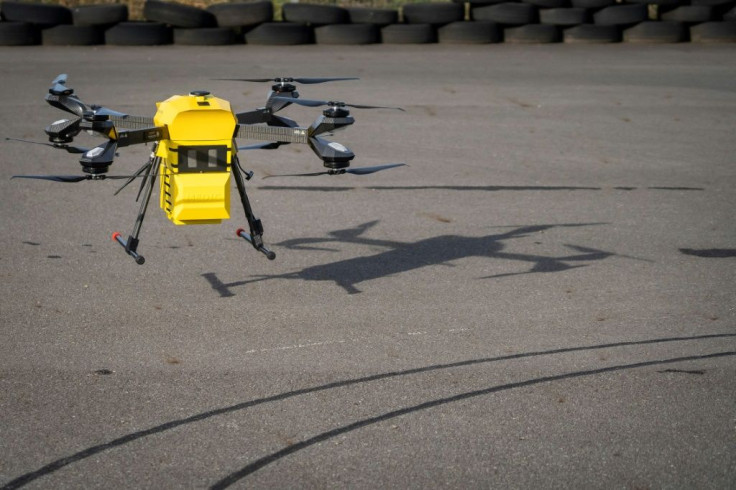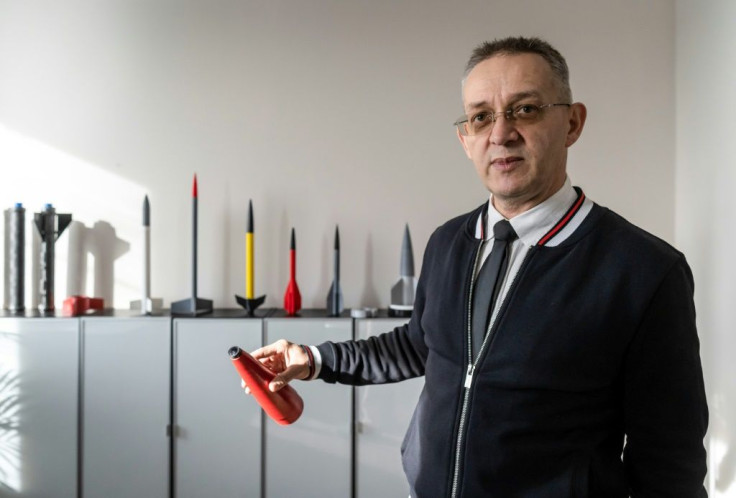Polish Firm's Drones, From Lifesaver To Invisible Model, Take To The Skies

Silently the eight propellers of the Hermes V8MT drone begin to spin and the large yellow aircraft rises up, locates its direction and moments later disappears into the sky in southern Poland.
Today the drone is making a successful 8.5-kilometre (5.3-mile) test flight near the headquarters of the Polish firm Spartaqs in the town of Mikolow; soon it will be making journeys between a blood bank and the Institute of Cardiology in Warsaw.
It will follow a route marked by radio beacons and fly over waterways for the most part so as not to injure anyone lest it fall.
Once the necessary permits arrive, Hermes could be used to save lives, transporting blood and medicine in emergencies. In the future, with a special pod in its cargo, it could even transport hearts for transplants.
"Flying at a rate of more than 80 kilometres (50 miles) an hour and with no risk of getting stuck in a traffic jam, the drone would be much faster than an ambulance," said Spartaqs company founder and chief inventor Slawomir Huczala.
Poland is joining the recent global explosion of drone technology, which has seen several civilian projects along with hundreds of often top secret military ones.
Huczala points out that a military version of the Hermes V8MD drone could also be a lifesaver.
"Armed with a georadar, it can fly over a minefield and locate even the mines that are made of plastic or glass. Soldiers could then either avoid the mines or disarm them," Huczala told AFP.

Hermes is the company's most advanced project, but a tour of the premises reveals many other prototypes that appear to have emerged straight out of science fiction.
Huczala calls them dronoids, as they are essentially flying robots with onboard computers that make them autonomous.
They are made of an ultra light and resistant mix of kevlar and carbon fibres that was fine-tuned by Spartaqs.

The skies have become crowded with the competition over drone manufacturing.
Amazon and DHL are developing drones for transporting packages, UberEats is working on a version for delivering meals, while the US firm Zipline has developed a drone network for transporting medicine in Ghana and now hopes to expand to other countries.
The Chinese taxi drone eHang 216 has received safety clearance and could come into service in December in the city of Guangzhou.

And there are other Polish competitors, including Rendos Multicopters, based in Krakow, and Flytronic in coal-mining Gliwice which works mainly for the armed forces, but also produces drones checking the chimneys of buildings to see whether any smoke is poisonous.
"In this competition, Poland has several advantages," said Dariusz Werschner, president of the Polish chamber of unmanned aerial vehicles.
These advantages include the public's positive attitude towards the technology and the country's modern laws regarding flights beyond the visual line of sight, which allow for flights across longer distances.
Reconnaissance drones meant for the army or border guards make up a large percentage of the Spartaqs models.
The company also has an anti-drone drone, which is armed with a small laser cannon able to destroy the battery of an enemy drone.
Another model, the Helidrone, which looks like an ultra-light mini helicopter, carries two rescue rafts that it can toss to shipwreck victims with great precision.
But Spartaqs claims a superstar model -- an invisible drone called Prometheus, whose body is made out of a dispersive material packed with electronics.
Sensors identify the luminosity and colour of the drone's environment, making it possible for the body to imitate them. The drone, like a chameleon, blends into the background.
The firm has also developed a drone able to fly around the underground corridors of coal mines to detect gas emissions and other potential threats.
Marcin Dziekanski, coordinator of the drone project of the Silesian metropolis, an alliance of more than 40 cities in the coal-mining Katowice region, said they use drones to monitor the smoke produced by coal-heated individual houses.
"They fly over Katowice, over the buildings, as well as over other cities, enabling us to intervene, in cooperation with the city police, showing that we are monitoring our space, our environment," he told AFP, adding that "we are creating a set of good practices that we are sharing with others."
Spartaqs considers itself above all a research firm looking into new technologies, though it has already sold a dozen drones -- at an average price of 50,000 euros ($55,000) a pop -- in Poland and Georgia.
But the company has realised that buyers like the Saudis and the Americans, who are very interested in certain models, want to see "the plant where they are produced."
So they have begun looking for investors, including abroad, who would like to participate in the development of a serial production line.
© Copyright AFP 2024. All rights reserved.





















